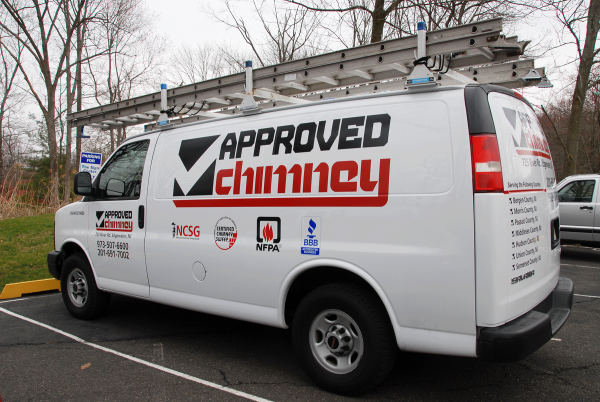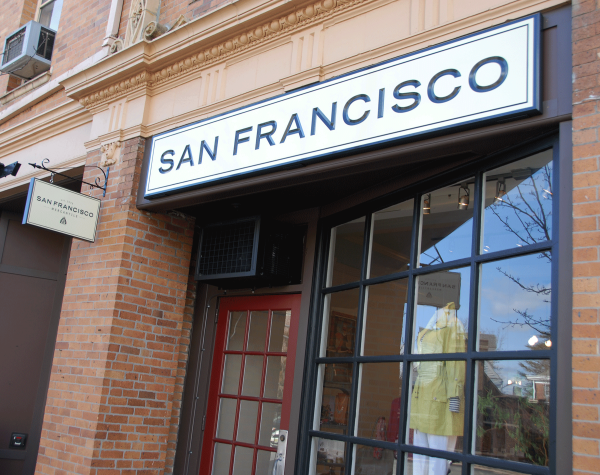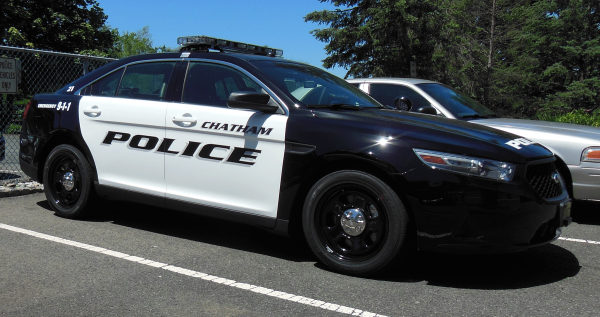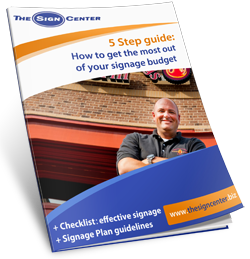The Sign Center is excited to announce our latest sign partnership with the Dominican Nuns of Summit, N.J. This monastery chose a carved and painted sign for their main entrance to reflect the history, solemnity and purpose of the monastery.
Carved signs make the perfect signage choice for religious and cultural institutions because they reflect an institution's historical significance, match the purpose of the organization, and help an organization stand out from other signs.
Historical Significance
The Dominican Nuns of Summit, N.J. first opened their order in 1919. The monastery belongs to the American Perpetual Rosary, which was first established in 1891. Their roots go back to Calais, France in 1880, where a community of cloistered nuns dedicated themselves to the Perpetual Rosary. Looking back even further, the Dominican order of nuns was established by St. Dominic de Guzman in France in 1216.
An institution with such a long and venerated history needs a sign that reflects this history. Neon, plastic, metal and other materials do not carry the same elegance and sense of history that carved and painted signs do. A carved sign feels weighty and looks like it can stand the same test of time the institution has so far.
In fact, new technologies for carved signs mean these signs do last longer than other signs or older carved signs made of wood. Today's carved signs are made of a high-density foam that stands up to weather better than wood but still looks as elegant and refined as wood.
Matching the Mission
The Dominican Nuns of Summit, N.J. and their Monastery of Our Lady of the Rosary offer a different experience for visitors than other visitor attractions. It offers a place for religious reflection, to learn about religious life, or engage in service with the nuns.
The carved and painted sign reflects the solemn nature of the monastery while also welcoming visitors to the monastery. A different material wouldn't as closely mirror the cultural experience visitors would expect of a monastery.
Call Attention to Yourself
Another benefit of carved and painted signs is how they help an organization stand out from other signs and organizations in the area. A carved sign doesn't work for every business and choosing one says something about your business.
For the Dominican Nuns, the carved sign they chose helps them stand out from commercial businesses, government offices or traditional tourist attractions. At the same time, the sign still beckons visitors because it stands out from other signs in the area.
If you have looked for a way to help your organization stand out from the crowd in a way that honors your tradition and history, consider a carved and painted sign, just as the Dominican Nuns of Summit, N.J. did.
Our Blog - A look into our world
Dominican Nuns of Summit NJ choose The Sign Center for their carved sign
Posted by Gary Baron on Mon, Jul 1, 2013 @ 02:25 PM
Approved Chimney selects The Sign Center for vehicle graphics
Posted by Gary Baron on Thu, Jun 20, 2013 @ 12:00 PM
The Sign Center is excited to announce our latest partnership, working with Approved Chimney to provide vehicle graphics for their service vehicles. Vehicle graphics provide a business with several advantages that Approved Chimney will benefit from. They enhance a company's overall presence on the road, increase their visibility in the community and improve their brand recognition.
Enhance Your Presence
Approved Chimney's vehicle graphics will first and foremost enhance their presence on the road and in the communities they serve. The graphics transform the van from an anonymous service vehicle to a traveling advertisement.
This kind of passive advertising asks nothing of the potential customer and requires very little of the business. But, it can have a large impact on people who see the van. Perhaps they may not need chimney sweeping and cleaning services now, but may at some point.
Or, seeing an Approved Chimney van may remind some people that they have neglected their chimney. They can call the contact number on the van right then and there to schedule an appointment or visit the company's website on their smart phone.
Increase Your Visibility
In these days of heightened attention to security, companies can make a smart choice to clearly label all their fleet cars, trucks and vans. Service company vehicles spend their time in neighborhoods and residents want to know who is coming and going.
Approved Chimney's vehicle graphics proudly announce who the company is, what services they provide and how to contact them. Local residents who see an Approved Chimney van coming into the neighborhood can rest easy that it's not just an anonymous van, but a service vehicle with a purpose.
Improve Your Brand Recognition
A company's brand is one of its strongest assets. The brand is much more than a logo, extending into everything a company does from its website to its business cards to its uniforms. Vehicle graphics can improve brand recognition by taking the brand into the community.
The vehicle graphics on Approved Chimney's vans exactly match the company's logo, font and colors so customers can immediately recognize the van when it arrives to perform a service. The Sign Center strongly believes in adhering to a company's brand standards for any vehicle graphics, signs and displays to ensure that seamless experience for customers.
Vehicle graphics may not seem like an important business strategy. However, these graphics have the ability to raise your profile in a community and attract business and customers, all without really doing anything.
Approved Chimney will reap the benefits of their new vehicle graphics. How can vehicle graphics help your company?
Topics: vehicle graphics, vehicle wraps, vehicle lettering
Carve out a niche for your business with a carved sign
Posted by Gary Baron on Fri, Jun 7, 2013 @ 12:51 PM
Topics: vehicle graphics, vehicle wraps, police vehicle graphics, police car graphics
Vendor vs partner...choose a sign company as a member of your team
Posted by Gary Baron on Thu, Jun 6, 2013 @ 12:44 PM
Brain researchers have definitive proof that working together in teams and collaborating onprojects actually makes us smarter asa species. The very act of solving problems, coming up with newideas and facing challenges causes our brains to grow. What all this science means is we should seek out ways to partner with others because we are better working together than we are apart.
Topics: property managment signs, facility managers, franchise solutions, wayfinding signage systems
Don't think vendor. Think partner when choosing a sign company.
Posted by Gary Baron on Fri, May 17, 2013 @ 11:58 AM
When it comes to getting the most out of your signage budget, all the steps in our guide are important. But perhaps the number one step you can take to maximize your budget, develop useful signs and build long term brand consistence is to develop a partnership with a reputable sign company.
Too often, businesses look at their vendors as simply suppliers. You order a product. The vendor delivers it. Done. This may work for your office supplies, but leaves something to be desired for your signage. A partnership means you work together to achieve success.
Let's explore how to get the most out of this valuable partnership. You can also see the ebook for more information or to start building a partnership with The Sign Center.
Trend Setters and Thought Leaders
A thought leaders is someone you turn to for the latest ideas in an industry. It's someone who keeps up with the latest news and ideas in a specific industry. The sign company you choose should be a thought leader in the sign industry.
As you choose a partner, ask about the industry.
Topics: property managment signs, directory signs, wayfinding systems, facility managers
Inspections Matter
Many facility managers dread inspections. They feel intrusive, burdensome and unnecessary. However, inspections do matter. The key role of signage is to inform and to make use of your facilities easier for those who use them.
To that end, they should be useful and intuitive. They must also meet local, state and federal guidelines and requirements. These requirements include:
- Compliance with the Americans with Disabilities Act (ADA);
- Proper notification regarding the storage of hazardous materials;
- Appropriate signage to remain in line with fire safety and evacuation procedures;
- And many, many more.
Inspections help facility managers ensure they have the correct signage for the benefit and safety of all people who you use your facility. Great inspections work to build a partnership with buildings and facility managers rather than simply impose punitive damages.
Make Inspections Easier
Inspections do benefit your facility, but that doesn't make them any easier. You can make them easier, though by completing your own inspections, staying on top of current laws and regulations regarding signage, and working with a sign vendor who understands sign regulations.
Completing your own regular inspections of your signs serves two purposes. First, it helps you regularly assess the quality and usefulness of your signs. You can inspect for damage, vandalism or obstructions that block your signs. Secondly, you can inspect your signs with a "cheat sheet" of sign regulations that inspectors will be on the lookout for and address issues before a formal inspection.
Staying on top of rules and regulations requires regular communication with regulatory bodies. You can do that by getting to know your inspectors, regularly check websites and other publications that govern signage, and creating a network of other facility managers.
A key strategy to make inspections easier is by working with a vendor who understands regulations. These vendors can even do pre-inspections with you to evaluate your signs in relation to the regulations your local, state and federal impose on your facility.
This year, work smarter not harder by completing your own regular inspections before a formal inspection.
Let's get started...why you need a plan for your signage
Posted by Gary Baron on Wed, Apr 10, 2013 @ 09:22 AM
How do most people lose weight? They don't will it to happen and hope for the best. Successful weight loss comes after you develop and stick to a plan of diet and exercise.
Getting the most out of your signage budget is similar. You have to develop and stick to a facility signage plan that takes into account all the aspects of great signage and helps eliminate the problems you most often encounter with your signs.
To get started writing a plan, it's helpful to understand why you need a plan in the first place and the key questions to answer.
Why a Master Plan?
A master plan might sound a little sinister, like something a criminal mastermind would cook up in the lab. But if you think about it, the master plan is what helps the criminal mastermind achieve his ultimate aims.
With a plan in place, everyone knows what to do, what to expect and they will be less likely to cause problems and delays. It also helps when someone steps outside of the guidelines. You can look back at the plan, revisit the guidelines and make corrections.
Without a plan, you will experience some of the classic problems with maintaining consistent facility signage — new management looking for a "change," a vendor who doesn't stick to guidelines, or urgent situations trumping the guidelines.
Building the Plan
You can begin to build your master facility signage plan by connecting with your marketing or advertising departments. These departments often build corporate brand guidelines that govern things like letterhead, business cards and even email signatures. These guidelines should govern your signs as well.
Then, you want to ask some key questions.
Topics: architectural signage, facility managers, wayfinding signs
How to make your signage more useful and intuitive
Posted by Gary Baron on Fri, Apr 5, 2013 @ 02:39 PM
Have you ever seen a sign that needs a sign to explain it to a building's visitors? What about signs that serve no purpose or use to customers? Those signs aren't getting the job done for your facility if no one can understand what the sign indicates or knows why the sign is there in the first place. These signs also waste money in your sign budget.
All signs in a building or facility should be both useful and intuitive for customers, clients and visitors. If a sign doesn't achieve that basic mission, then don't waste your money on the sign. To make signs useful and intuitive, there are four key indicators to help you achieve this goal.
1. Know Who Will See the Sign
Different audiences call for a different approach to signage. The signs customers and clients need to see vary greatly from those employees need to see. Carefully considering the sign's audience will help you understand what information the sign needs in order to be useful and intuitive to the viewer. This is also a good lens to view current signage in your facility to see if it needs updating.
If you are unsure who sees what signs in your building, spend some time touring the facility. Spend time in different areas observing who visits that area, what signs already exist and how people react to and interpret signage. This "field data" can yield a lot of information to make signs more useful and intuitive for the people who see the sign regularly.
2. Make Signs Recognizable
Or in other words, make the sign visible. Intuitive and useful signs won't work if people can't see them. As you consider color, size and other sign attributes, keep in mind where the sign will eventually go in a building. Don't choose colors that will blend into the surrounding wall or sizes that are too small for a space.
Once you have placed signs in your facility, ensure they don't get blocked by plants, doors, file cabinets or other obstructions. Signs no one can see are basically signs that aren't even there.
3. Use Common Symbols
Creativity is great in some areas of business like marketing and advertising. Signage, though, is one place where you want to stick with what works. Intuitive and useful signs rely on common symbols and icons that customers, clients and visitors can easily recognize and interpret. These include common symbols for restrooms, stairs, disabled access, emergency exits and other commonly visited sites in and around facilities.
4. Vary Signs for Audience
This "must" for useful and intuitive signs takes into account the different audiences who will visit your facility over the course of a business day. This includes:
Topics: architectural signage, property managment signs, wayfinding systems
How to get long-term brand consistency in your signage
Posted by Gary Baron on Tue, Apr 2, 2013 @ 09:24 AM
Executing your brand strategy with excellence requires long-term consistency. Everything your company does should fit into your brand guidelines, even your signage. This is easier said than done, however, as companies run into several roadblocks in their efforts to maintain long-term brand consistency. Maintaining cohesive signage, though, is key to getting the most out of your signage budget.
In this step, we'll explore the common problems companies encounter in sticking to their brand guidelines and how to overcome those hurdles.
Common Signage Hurdles
When it comes to executing your brand in your signage, companies encounter many of the same problems with maintaining consistency: outside influencers, unavoidable situations, and a lack of fidelity to guidelines.
You have many outside influencers who want to have a say in your signage. These include facility managers who want to have their stamp on a building, vendors who think they know best and employees who act independently.
Unavoidable situations also crop up regularly. Signs get damaged from weather or vandalism. A new city or county ordinance might require specific signage immediately. When these situations arise, urgency too often trumps brand guidelines. All of a sudden, fidelity to your branding strategy goes out the window.
Putting Your Brand First
Despite these common hurdles, you can achieve long-term brand consistency in your signage by recognizing these problems and creating plans to address them before they happen.
Start by identifying three key details for your signage:
- Brand color — Pick limited and specific colors your signs can include.
- Brand logos — Identify what versions of your brand's logos will go on signs.
- And measurements — Determine the specific size of an array of signage so replacement signs and new signs measure the same.
After you have identified these key details, you need to communicate them to all the stakeholders — your sign vendor, employees and others like building managers. Knowledge is power after all and many lapses in brand guidelines occur because people weren't aware of the guidelines in the first place.
You should also keep the circle of people who can make final decisions on signage small. When fewer people have the authority to order new and replacement signs, the likelihood of errors will decrease.
Topics: property managment signs, branding, hospital signage, wayfinding signs, wayfinding signage systems








-resized-600.jpg)





